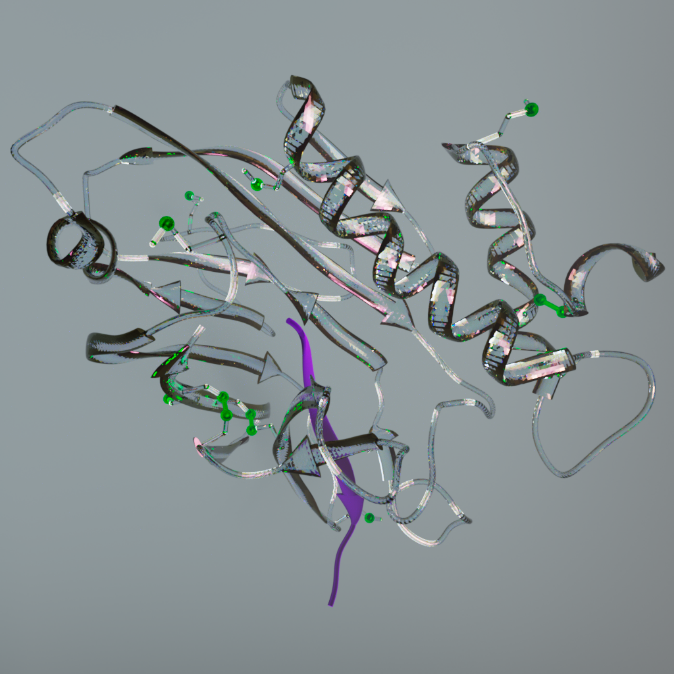Keep up to date with the latest research and developments from Diamond. Sign up for news on our scientific output, facility updates and plans for the future.
Neutrophils are the most common type of white blood cell in our bodies. They play essential anti-microbial and inflammatory roles, helping our immune system fight infections and heal injuries. However, their activities require tight regulation as dysfunction often leads to detrimental inflammatory and autoimmune diseases. An international group of researchers used Diamond’s long-wavelength macromolecular crystallography (MX) beamline (I23) to help further understand how the immune system works and what goes wrong when people suffer from autoimmune disease.

The group were interested in investigating GPR97, a protein found on the surface of neutrophils. Diamond’s long-wavelength MX beamline I23 was used to localise the sulphur atoms in the structure of the extracellular domain of GPR97. Pinpointing the location of these atoms allowed the group to build a model of the protein, shedding light on a region of the protein map that was poorly defined. The I23 beamline team supported the group at every step including data collection, model building, model validation and contributing to the manuscript.
The research group showed that that the protein GPR97 plays a role in the inflammation process. It associates with a potent protein (mPR3) found on neutrophils. Together with other protein interaction partners identified, this association is a key step leading to neutrophil activation. The structural/functional analysis of the GPR97 extracellular region on beamline I23 identified two binding domains. Both GPR97 and mPR3 are upregulated on the surface of disease-associated neutrophils, suggesting a role in pathologic inflammation.
The results give biological insights into the molecules that are involved in GPA (Granulomatosis with Polyangiitis), a rare autoimmune multisystem disease that causes inflammation of blood vessels in the nose, sinuses, throat, lungs and kidneys. The group’s findings help to better understand how neutrophils function and what goes wrong in GPA. They are now working on harnessing the results to design better prognostic tools and potentially first drugs to improve the care of patients with GPA.
Chi T-Y. et al. GPR97 triggers inflammatory processes in human neutrophils via a macromolecular complex upstream of PAR2 activation. Nature Communications (Oct 2022). DOI: 10.1038/s41467-022-34083-1
I23-Long wavelength MX
Scientific Discipline: Non-Communicable Diseases; Autoimmune Diseases; Health & Wellbeing; Structural biology; Drug Discovery; Life Sciences & Biotech
Technique: Diffraction; Macromolecular Crystallography (MX)
Diamond press office: Isabelle Boscaro-Clarke. Head of communications. [email protected]
Beamline I23: Armin Wagner, Principal Beamline Scientist, [email protected]
Corresponding author: Elena Seiradake, University of Oxford
Diamond Light Source is the UK's national synchrotron science facility, located at the Harwell Science and Innovation Campus in Oxfordshire.
Copyright © 2022 Diamond Light Source
Diamond Light Source Ltd
Diamond House
Harwell Science & Innovation Campus
Didcot
Oxfordshire
OX11 0DE
Diamond Light Source® and the Diamond logo are registered trademarks of Diamond Light Source Ltd
Registered in England and Wales at Diamond House, Harwell Science and Innovation Campus, Didcot, Oxfordshire, OX11 0DE, United Kingdom. Company number: 4375679. VAT number: 287 461 957. Economic Operators Registration and Identification (EORI) number: GB287461957003.